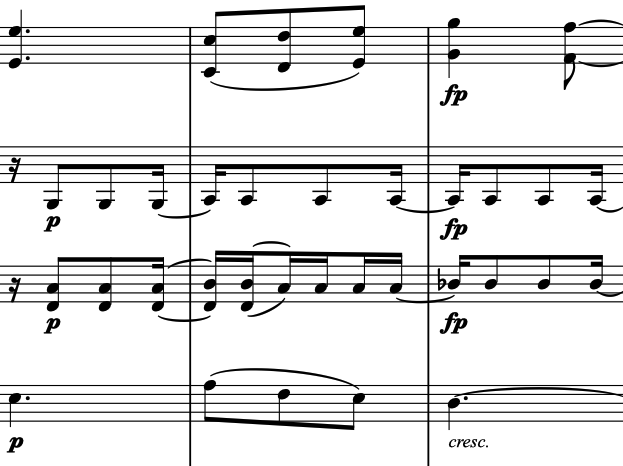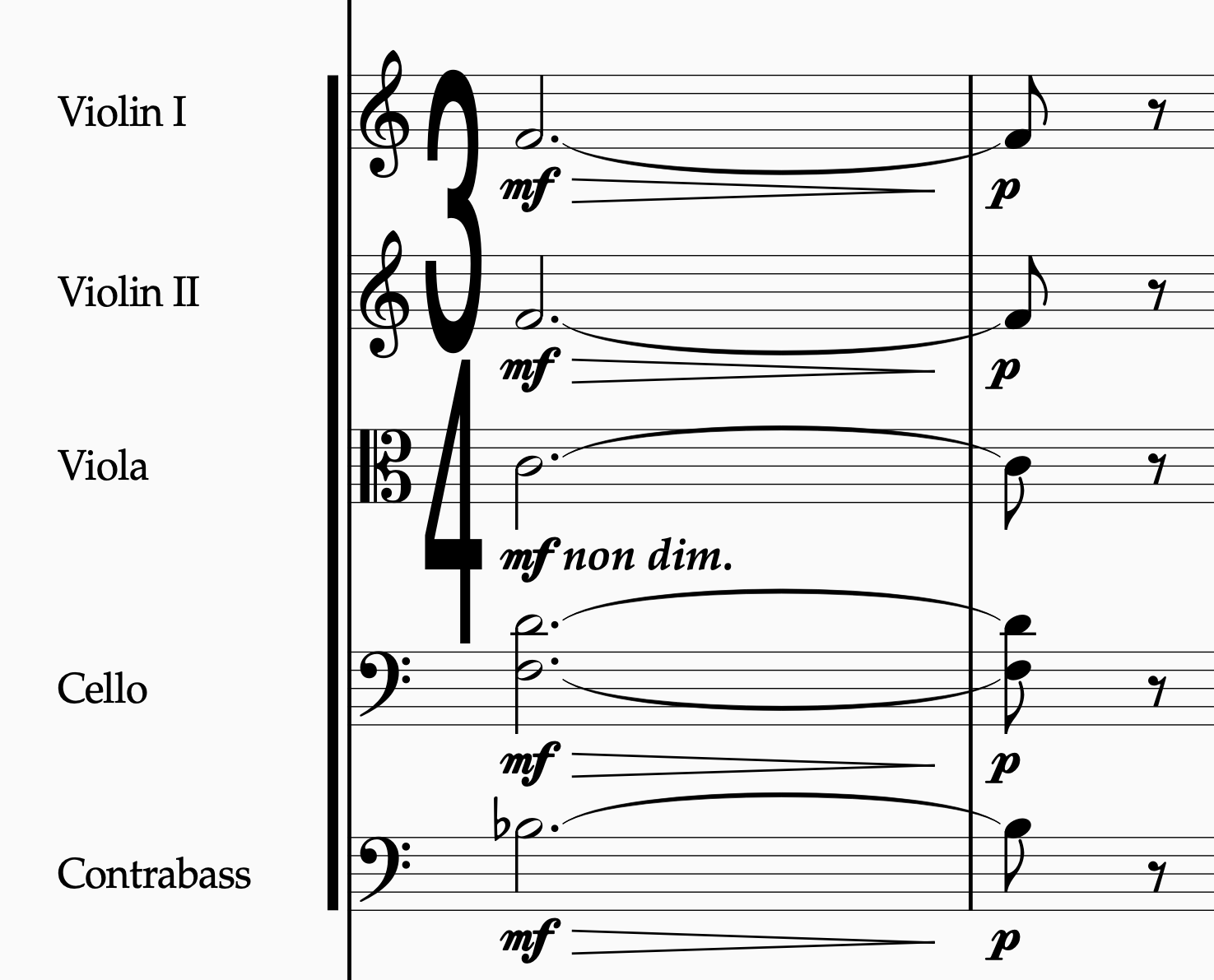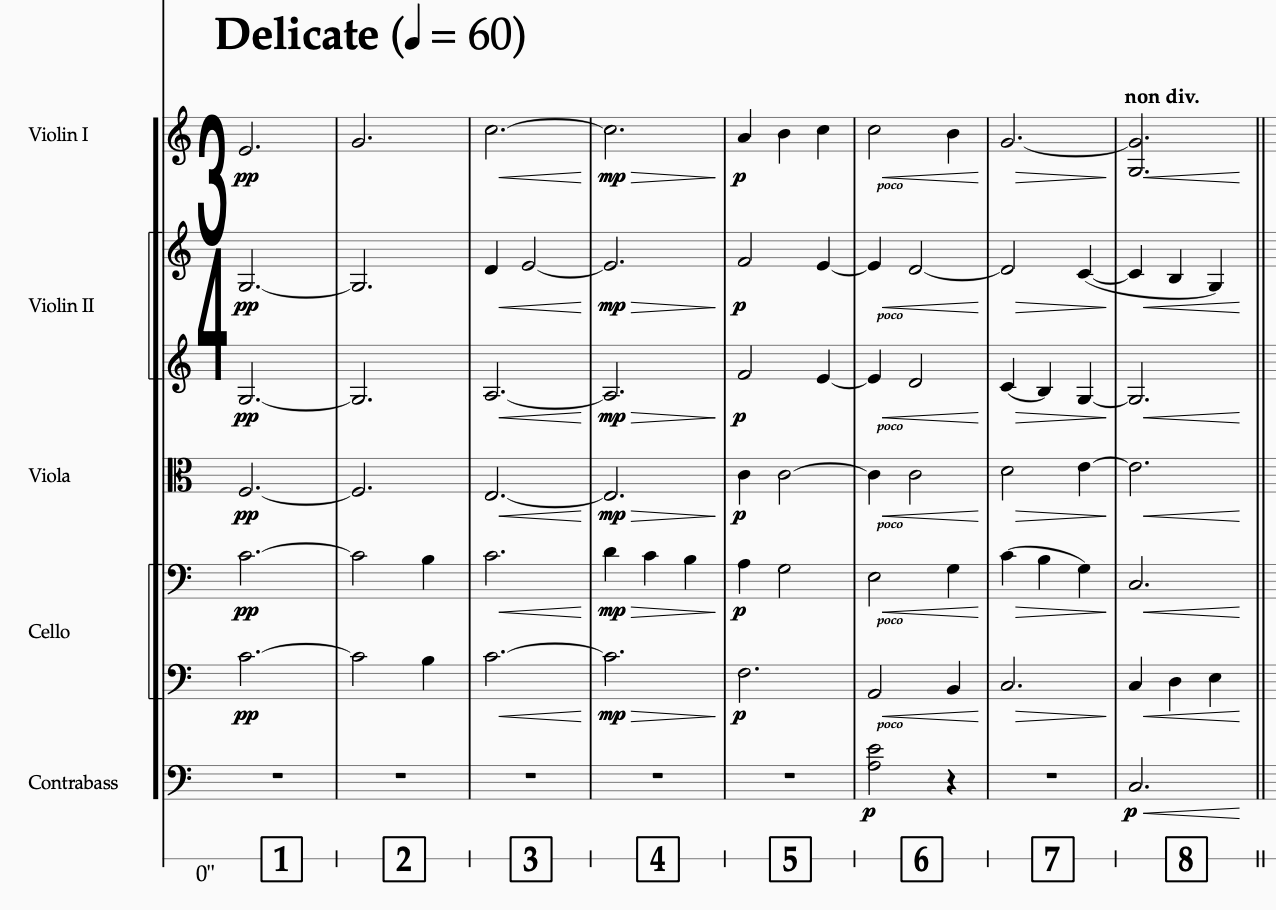Welcome to the blog where I share techniques that help you work faster and more efficiently with Sibelius, so that we can do less and do it better.

When the Arrangement Clears the Way
In previous posts, I’ve written about how orchestration isn’t just about color—it’s about clarity, hierarchy, and making sure the right thing is heard at the right time.
This time, I want to show how much of that clarity can already be built into the arrangement itself.
And how, with just a bit of orchestration, you can make a score balance itself.

Clarity by Register: Orchestrating Strings Like Schumann
When orchestrating for full orchestra, we often rely on color to do the talking: clarinets smooth things out, horns give nobility, trumpets bring presence. But when you’re working within a string ensemble — especially in exposed chamber-like passages — color is off the table.
What you do have is register.
And if you learn to control it well, you can create clarity, balance, and direction without needing to touch a single fader.

Orchestration That Climbs (and Lands Gently)
After a careful build-up of spacing, alternation, repetition, and that delicious 1+1=3 trick, Grieg finally lets the orchestra open up. But even now, at the high point, he doesn’t lose control. What we get isn’t bombast – it’s clarity in widescreen.
What’s especially elegant here is how Grieg structures this short passage without needing to change the musical material. He’s working with the same motivic idea across nine bars, but it doesn’t feel repetitive – because the structure evolves.

Repetition Without Repeating Yourself
In this follow-up, we’ll dive into bars 5–20 and watch how Grieg builds without ever cluttering. The orchestration grows, yes – but mostly by reusing, reshaping, and rebalancing familiar materials. If you missed the first post, you’ll want to read it. If you didn’t miss it – welcome back.

You don’t need a new color – you need space
A lot of orchestration is just balancing uniformity and contrast. That’s the whole game. You make things the same, or you make them different – and hopefully on purpose.
Most beginner orchestrators think of colour as something you add: new instruments, more motion, higher dynamics, a counter-line, a pedal, a harp flourish, maybe a triangle, and hey, why not let the clarinets do something for once. But the result is often the opposite of contrast. It’s clutter. It’s a musical desk drawer.

Undercover Lines: How Markings Shape the Unseen
One of the subtler yet most effective tools in an orchestrator’s palette isn’t a specific note or combination of instruments—it’s a marking. Words like solo, espressivo, in rilievo, sotto voce, and dolce may seem like mere decorations on the page, but they can dramatically influence how a passage is perceived—both by the player and the listener.

Seeing is Believing: The Art of Dynamic Clarity in Orchestration
Dynamics shape musical expression, but they only work if musicians can interpret them correctly. No one has X-ray vision—musicians can’t see the surrounding dynamics in real-time, so expecting microscopic shifts to carry musical intent is wishful thinking. Instead, orchestration should ensure that balance and clarity are built into the texture from the start. This post explores practical strategies to achieve that without relying on brute-force volume adjustments.

Uniform Dynamics: A Composer’s Path to Clarity
One of the most common mistakes among both emerging and experienced composers is treating dynamics as a mixing tool. The temptation is understandable: If the second violins dominate a passage, one might instinctively lower their dynamic marking. If the oboe struggles to be heard, a composer may consider increasing its volume. Instead of adjusting dynamics to balance the orchestration, consider how instrument positioning, bowing, articulation, and player allocation can create a more natural and effective balance.

Dot Your I’s, Tie Your Notes, and Number Your Players
Continuing the thread of the huge ROI of precise notation, let’s talk about one of the simplest but most crucial practices: marking every entrance with the correct player specificity.
I know—it’s not as thrilling as negative harmony, mediant relationships, or polyrhythmic textures. (I’ve been down that rabbit hole too.) But if you don’t mark these things clearly, others will make decisions for you. And that’s rarely ideal. Plus, it forces you to think about the actual musicians in the orchestra—not just blobs of sound on a score.

The Dynamics of Decision-Making: Mark It or Leave It?
One of my most formative lessons as a budding orchestrator had nothing to do with voicings, colors, interlocking lines, instrument combinations, or any of the fancy things that books—rightfully—cover and that most of the conversation revolves around. It came when I first had someone else doing the copying. Suddenly, I was getting a boatload of questions…